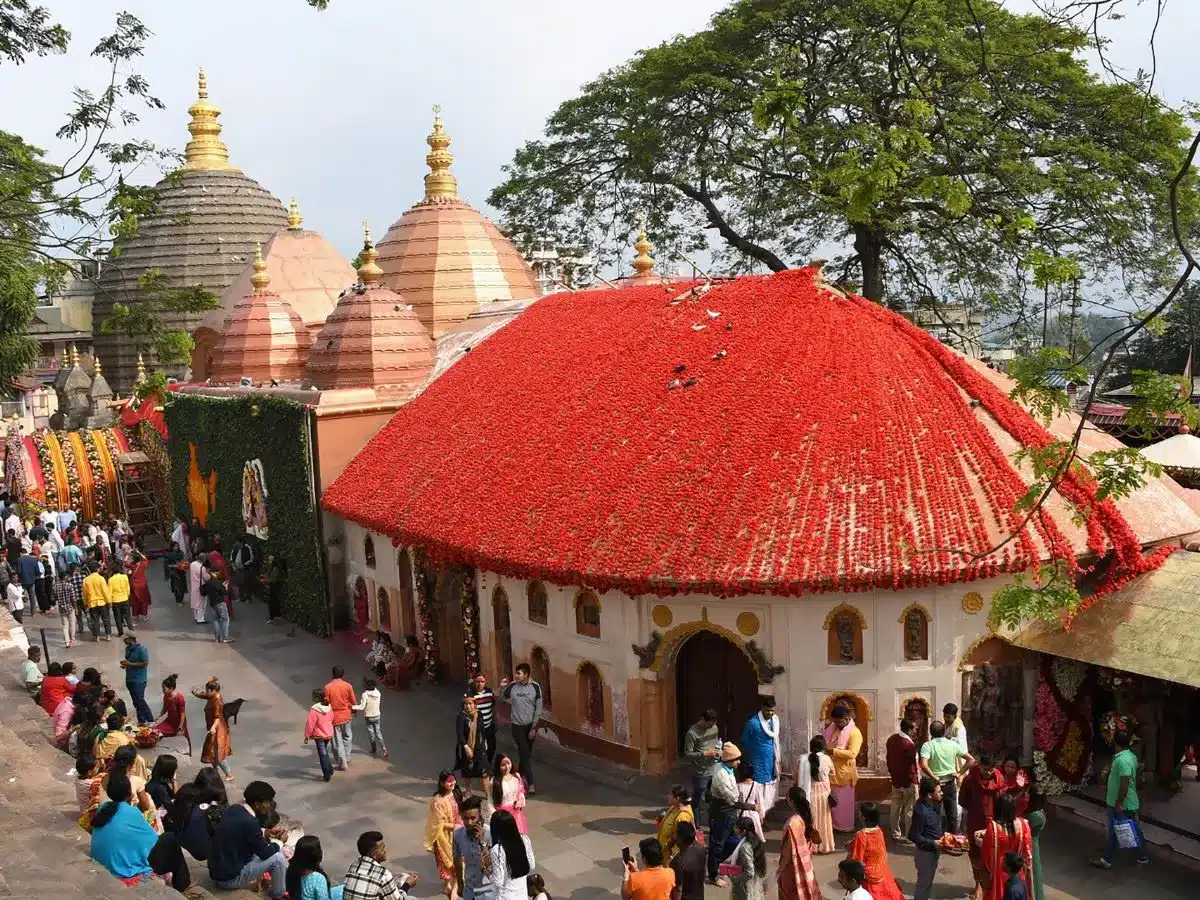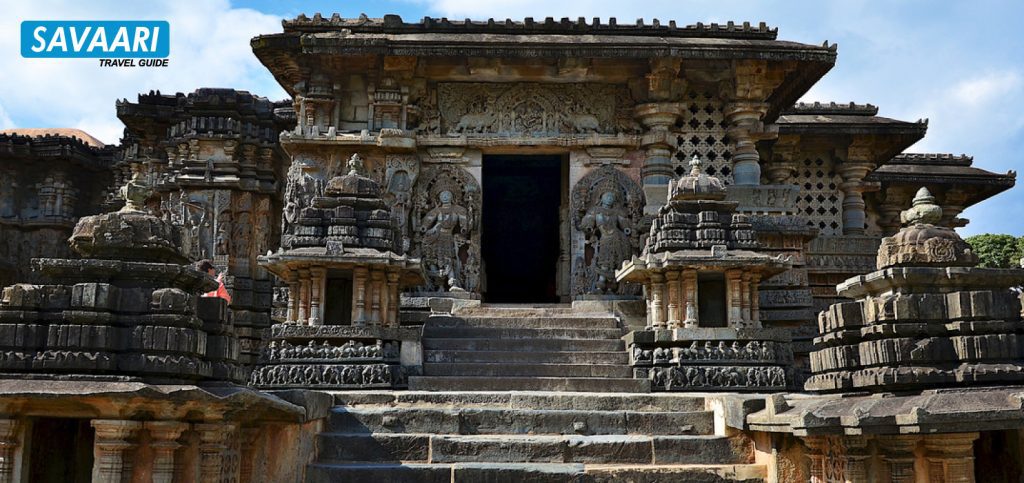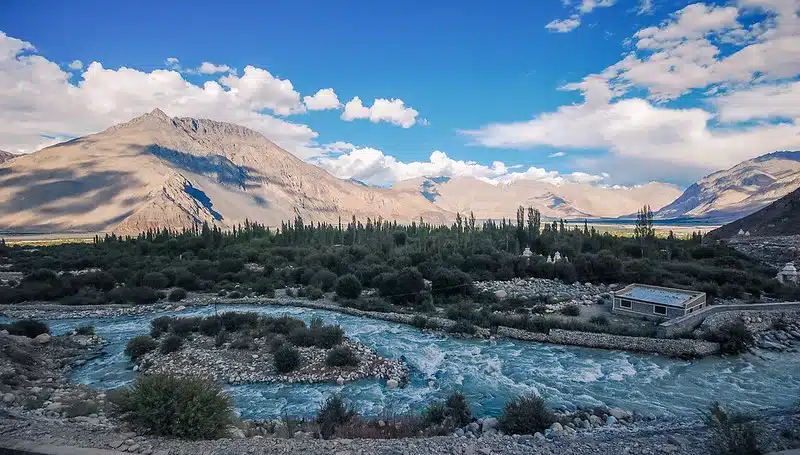The Kamakhya Temple is situated on Nilachal Hill in Guwahati, Assam. It is a symbol of India’s rich cultural heritage and history. Dedicated to Goddess Kamakhya, this revered pilgrimage site exudes an aura of mystique and ancient traditions. Believed to be a sacred spot where Goddess Kamakhya’s power attracts devotees and curious travelers from all over the world, the temple is an enigmatic blend of spirituality, history, and nature. As we help you out in planning the perfect trip with the best of things to do in Kamakhaya temple, it’s a good idea to keep your taxi from Guwahati to Kamakhya temple booked.
- Kamakhya Temple darshan timings
- Things to do in Kamakhya Temple
- Kamakhya Temple dress code
- Sevas and poojas at Kamakhya Temple
- Kamakhya Temple entry fee and pooja charges
- Kamakhya Temple festivals
- Other attractions near Kamakhya Temple
- How to plan a trip to Kamakhya Temple
- Hotels and Resorts near Kamakhya Temple
- Nearby road trips to take from Kamakhya Temple
- Useful links
About Kamakhya Temple
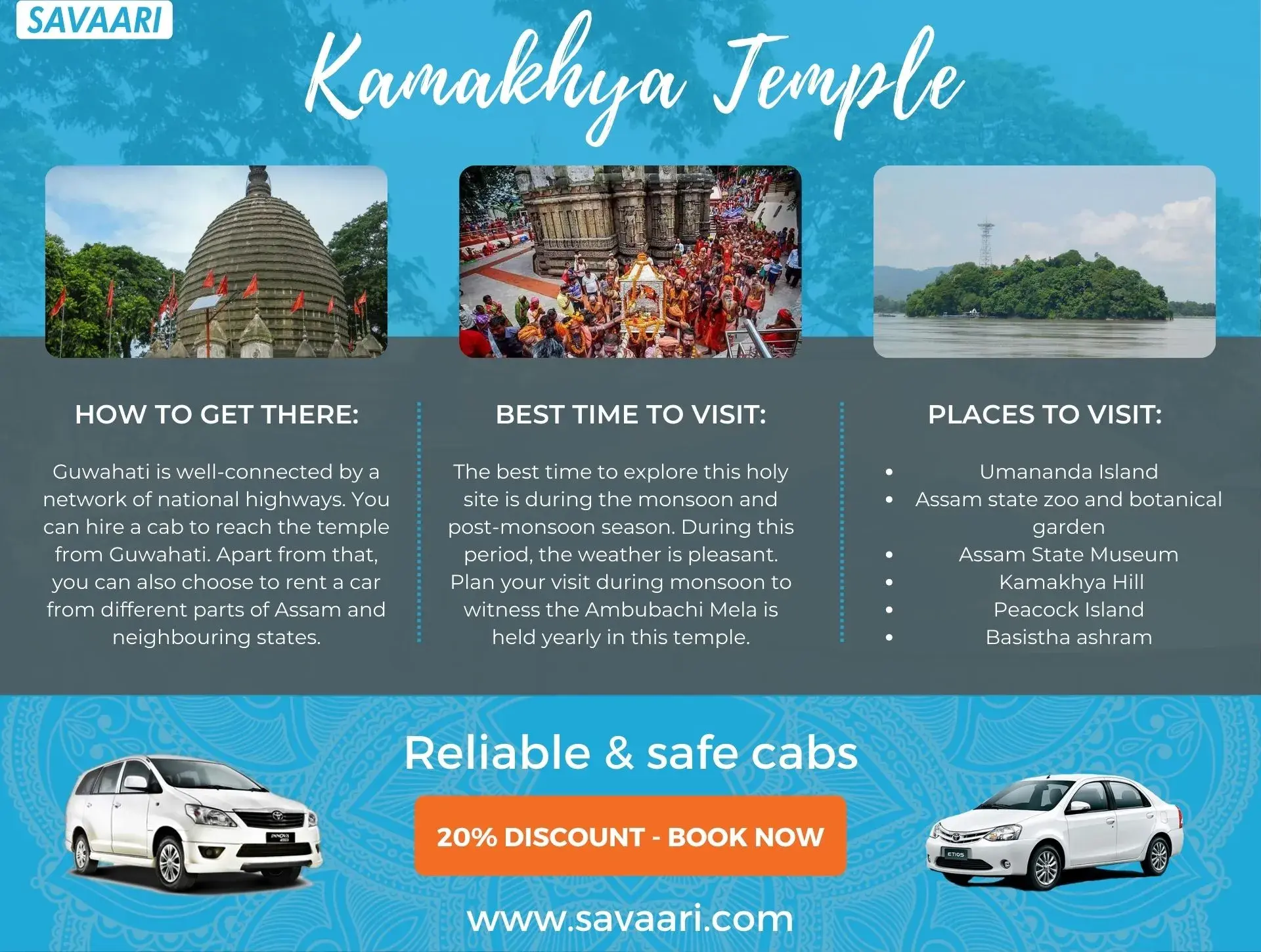
Kamakhya Temple is situated atop the lush Nilachal Hill in Guwahati, Assam. It is one of the ancient and enigmatic temples of India that holds immense significance in the country’s spiritual tapestry. Pilgrims and spiritual seekers from different parts of the world visit this temple to seek divine blessings and spiritual wisdom. The temple is devoted to Goddess Kamakhya, who represents the divine feminine energy and is considered the ultimate source of life and power. It is deeply rooted in the Shakti cult, which celebrates the goddess’s creative force. One of the temple’s historical tales claims that it is the place where the goddess’s yoni fell, which further intensifies its mystique and the connection between creation and spirituality. Kamakhya Temple is a haven of sanctity, where the spiritual and historical elements converge, offering a mystical journey into ancient Indian mysticism.
Deity of Kamakhya Temple
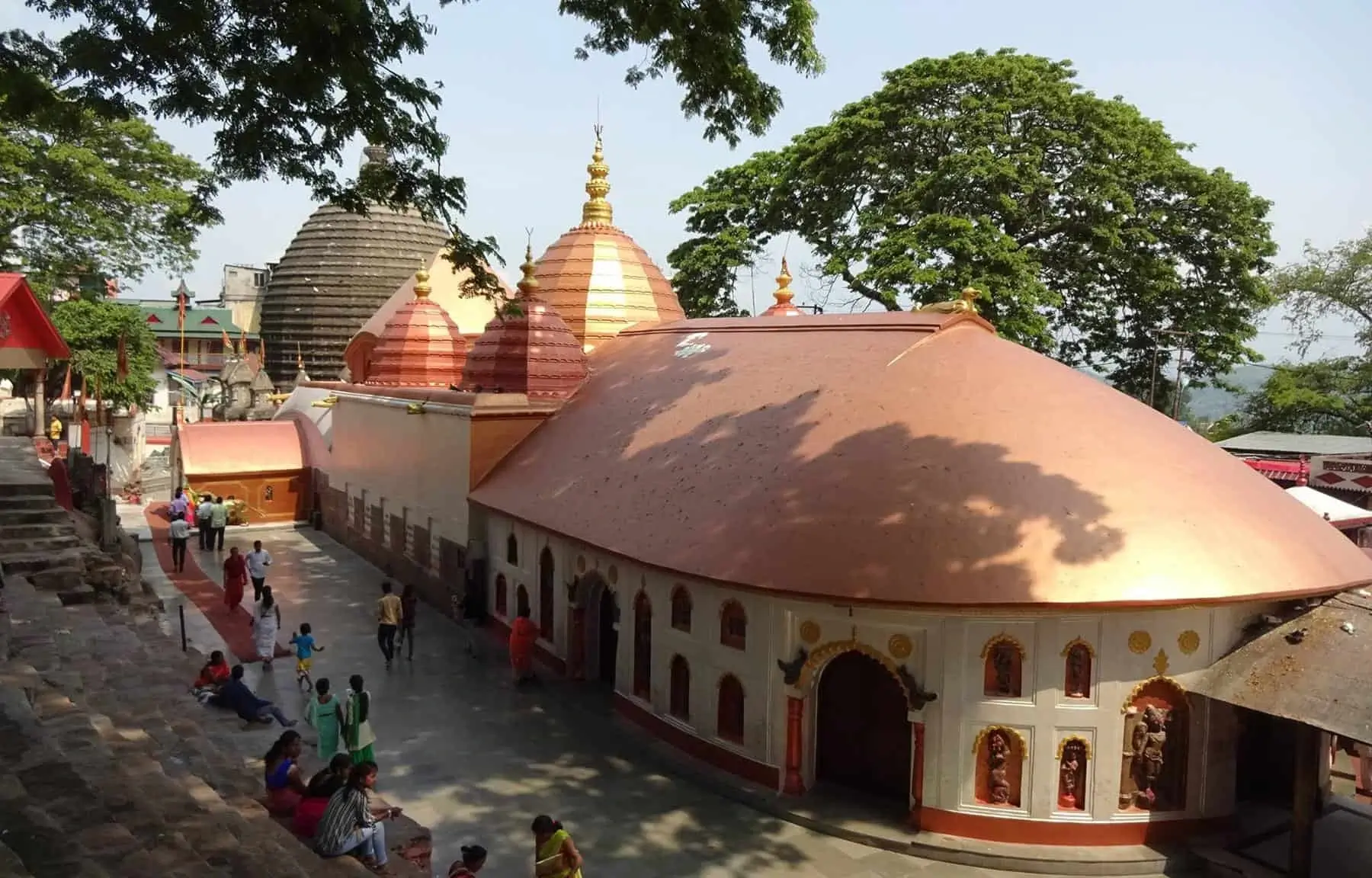
The Kamakhya Temple deity, Goddess Kamakhya, holds a significant and revered position in Hinduism, particularly in the Shakti sect. She represents the divine feminine energy and is worshipped as the ultimate source of power and creation. Kamakhya is a powerful and enigmatic goddess, who symbolises fertility, femininity, and the cycles of life. The temple’s unique feature is the yoni-shaped stone, which represents the goddess’s reproductive organ and is worshipped as a manifestation of her presence. Devotees visit the temple to seek her blessings for prosperity, fertility, and spiritual awakening. The goddess’s persona is a captivating blend of the nurturing and fierce aspects of the divine. This makes Kamakhya Temple a place where the mysteries of creation and spirituality converge, attracting pilgrims and seekers from far and wide.
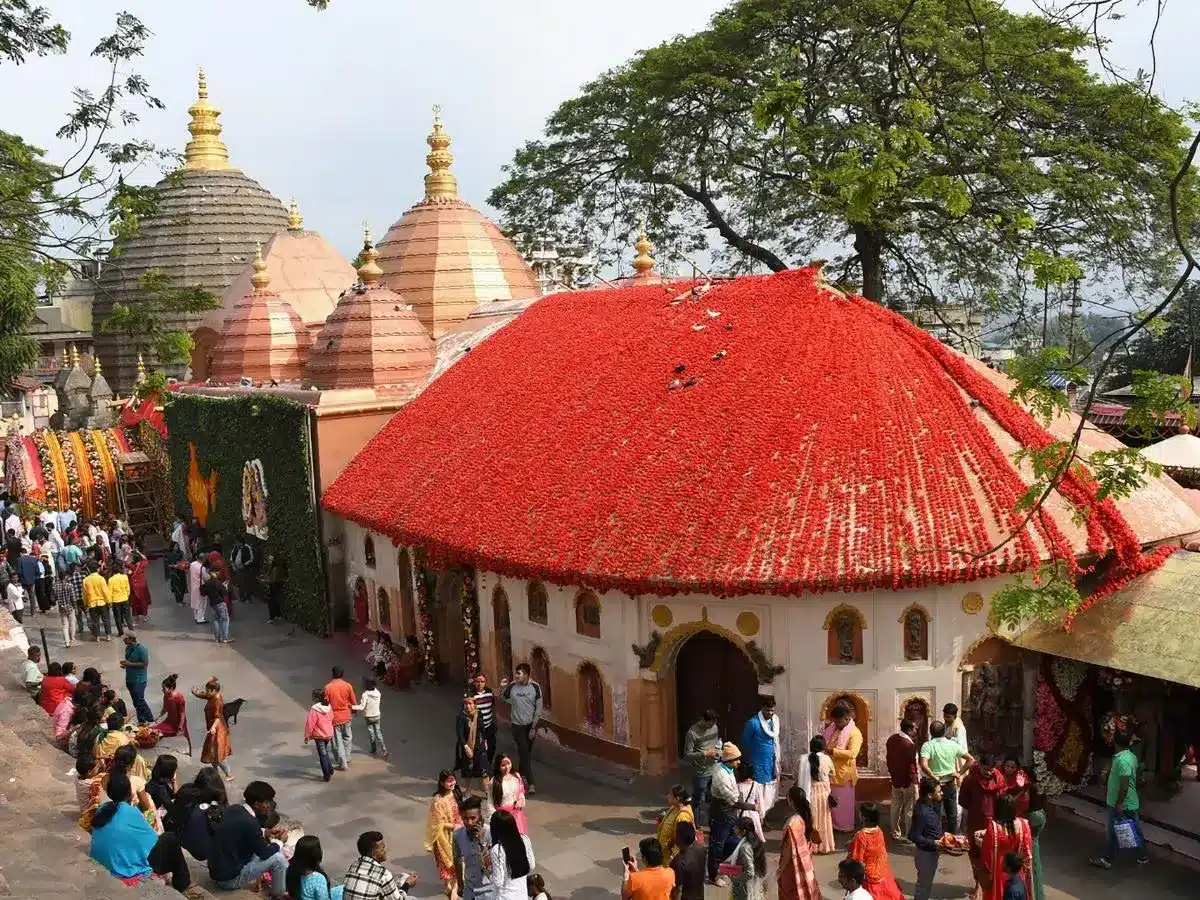
Location of Kamakhya Temple
Perched on Nilachal Hill in Guwahati, Assam, the Kamakhya Temple is a confluence of divine serenity and natural splendor. Overlooking the Brahmaputra River, it offers a tranquil retreat amid verdant surroundings. The temple, a nexus of spirituality, is enveloped by a lush tapestry of forests, enhancing its mystic allure. As devotees and travelers ascend the hill, they are greeted by the panoramic vistas of Guwahati, with the river meandering below against the tableau of distant hills. This sacred space not only elevates the spirit but also provides a vantage point over the sprawling landscape. The synergy of the temple’s sanctity with the breathtaking scenery amplifies the visitor’s experience, making Kamakhya Temple not just a pilgrimage site but a journey into the heart of nature and spirituality.
History of Kamakhya Temple
Kamakhya Temple is a sacred site with a history as enchanting as the temple itself. This ancient place of worship dates back over a millennium, with its origins shrouded in legends and myths that continue to captivate the imagination of all who visit. The temple’s history is intrinsically tied to the revered goddess Kamakhya, whose legend is both powerful and enigmatic. According to one myth, it is said that the temple marks the spot where the yoni, or reproductive organ, of the Goddess Sati, fell during Lord Shiva’s Tandava dance, signifying a potent connection between creation and spirituality. Over the centuries, Kamakhya Temple has evolved, bearing the imprints of various dynasties and rulers who contributed to its architectural grandeur, making it a site where history and spirituality converge.
Best time to visit Kamakhya Temple
When planning your visit to Kamakhya Temple, it’s crucial to choose the right time to ensure an optimal experience. The best time to explore this holy site is during the post-monsoon season, which runs from October to February. During this period, the weather is pleasant with clear skies and mild temperatures, making it the most comfortable time for both pilgrims and travellers. The temple and its lush surroundings look stunning during these months, providing an excellent opportunity to immerse yourself in the spiritual and natural beauty of this unique destination. However, if you love the magic of monsoons and don’t mind occasional rainfall, June to September can be an adventurous time to visit, though be aware that the paths may be slippery. Ultimately, your choice of timing will depend on your preferences and what kind of experience you want to have at Kamakhya Temple.
Interesting facts about Kamakhya Temple
Kamakhya Temple is not just a site of spiritual significance but a repository of intriguing mysteries and captivating facts that beckon curious travellers and devotees alike. the temple is one of a kind, with some mesmerising facts that will surely drive every traveller to this mystic temple.
- The bleeding goddess- Kamakhya Temple is renowned for the annual Ambubachi Mela, a festival that marks the menstruation of the goddess. During this time, the temple remains closed for three days as it is believed that the goddess undergoes a purification process. The earth turns red during this period, a phenomenon that adds to the temple’s mystique.
- Yoni symbolism- At the core of the temple’s sanctum sanctorum lies a yoni-shaped stone, symbolizing the reproductive organ of the goddess. This powerful representation of the divine feminine is a focal point of worship at Kamakhya.
- Hidden scriptures- The temple complex houses ancient scriptures that are preserved and revered. Some texts are inscribed on the walls, and while many remain undeciphered, they continue to intrigue scholars and researchers.
- Kamakhya’s connection to the Kamarupa Kingdom- The temple’s name, Kamakhya, is derived from the Kamarupa Kingdom, where it stands. The Kamarupa Kingdom, with its rich history, was a significant cultural and political centre in ancient India.
- Tantra practices- Kamakhya Temple is often associated with tantra practices, attracting practitioners and seekers of esoteric knowledge. The temple is a hub for those interested in exploring the mystical and spiritual aspects of life.
- Unique architecture- The temple’s architecture features a blend of indigenous Assamese and Vedic styles. The distinctive beehive-shaped dome and its overall design are not only architecturally fascinating but also hold deep cultural significance.
- Vibrant festivals- The temple hosts a variety of colourful festivals throughout the year, celebrating the goddess and the Assamese culture. The Ambubachi Mela, Durga Puja, and Manasha Puja are some of the vibrant events that draw crowds from far and wide.
- Burhi Maas- During the month of Burhi Maas, the temple’s doors remain closed as it is believed that the goddess goes through her annual menstrual cycle. Devotees pay their respects during this time and celebrate the goddess’s divinity.
- Legends and folklore- Kamakhya Temple is steeped in legends and folklore that add layers of mystique to its history. These stories of deities, demons, and divine manifestations continue to be passed down through generations.
- Biodiversity abounds- The temple’s surroundings are home to a diverse range of flora and fauna. Birdwatchers and nature enthusiasts can spot various species of birds and butterflies, making it a haven for both spiritual and natural exploration.
Kamakhya Temple darshan timings
Planning a visit to the sacred Kamakhya Temple requires not only an understanding of its profound spirituality but also knowing the temple’s darshan (viewing) timings. This ensures that you can experience the spiritual ambience and architectural grandeur at the right time. It is important to note that the temple remains closed for a brief period during Yoni Pujan. During the annual Ambubachi Mela, the temple follows a slightly different schedule. Here’s a handy guide to help you align your visit with the darshan timings that suit your preference.
| Darshan type | Morning timings | Evening timings |
| General Darshan | 5:30 AM – 10:00 AM | 3:00 PM – 5:30 PM |
| Ambubachi Mela Darshan | 5:30 AM – 1:00 PM | 2:30 PM – 5:00 PM |
| Aarti Darshan | 5:30 AM – 6:30 AM | 4:30 PM – 5:30 PM |
| Closed During Yoni Pujan | 6:30 AM – 8:00 AM | 5:30 PM – 7:00 PM |
Things to do in Kamakhya Temple
Kamakhya Temple, with its rich history and spiritual significance, is not just a place for worship; it offers a multifaceted experience that caters to the soul, the senses, and the curious traveller. From delving into the temple’s mysteries to exploring its serene surroundings, here’s a list of things to do that will make your visit to Kamakhya Temple truly unforgettable.
- Seek the divine blessings – The primary reason for visiting Kamakhya Temple is to seek the blessings of Goddess Kamakhya. Participate in the temple’s rituals, offer your prayers, and feel the divine presence as you connect with the sacred energy of the goddess.
- Witness the Yoni Puja – One of the most intriguing aspects of the temple is the Yoni Puja, a ritual performed daily. Witnessing this ceremony provides a unique glimpse into the temple’s rituals and spiritual practices.
- Explore the architecture – Marvel at the temple’s distinctive architecture, characterized by its beehive-shaped dome and indigenous Assamese design. The intricate carvings and the overall structure are a visual delight for architecture enthusiasts.
- Visit the holy Shakti peetha – Kamakhya Temple is considered one of the 51 Shakti Peethas in Hindu mythology. Explore the sacred shrine and learn about the goddess’s association with this particular place.
- Attend festivals and melas – Plan your visit during festivals like Ambubachi Mela, Durga Puja, and Manasha Puja to witness the vibrant celebrations and immerse yourself in the local culture.
- Explore the Kamakhya Wildlife Sanctuary – Adjacent to the temple is the Kamakhya Wildlife Sanctuary, a haven for nature enthusiasts. Explore the lush surroundings and discover the diverse flora and fauna, making it an ideal destination for birdwatching and wildlife photography.
- Soak in the scenic views – Enjoy breathtaking panoramic views of the Brahmaputra River and the surrounding hills from the temple premises. The serene natural beauty is a sight to behold.
- Discover the mysteries – Uncover the legends and folklore associated with the temple by engaging with the local priests and guides. Their stories and insights offer a deeper understanding of Kamakhya’s enigmatic past.
- Shop for souvenirs – Explore the local markets and shops surrounding the temple to pick up souvenirs such as traditional Assamese handicrafts, religious artefacts, and colourful fabrics.
- Savour local cuisine – Indulge in Assamese cuisine at nearby eateries. Try traditional dishes like Assam tea, pithas, and Assam laksa to complete your cultural experience.
Whether you’re a pilgrim seeking spiritual solace or a traveller eager to delve into the mysteries of this ancient temple, Kamakhya offers a wide range of experiences that cater to diverse interests, making it a truly enriching destination.
Kamakhya Temple dress code
When visiting Kamakhya Temple, it’s important to be mindful of the dress code to show respect for the sacred site and its customs. Dressing appropriately not only adheres to tradition but also allows you to fully immerse yourself in the spiritual ambience. Here’s a list of pointers to help you adhere to the dress code and make your visit to Kamakhya Temple a comfortable and respectful one.
- Wear traditional attire – Opt for traditional Indian attire if possible. For men, this could be a kurta-pajama or dhoti, while women can choose to wear sarees or salwar kameez. Traditional attire is not only culturally respectful but also practical for navigating the temple’s premises.
- Avoid Western wear – It’s advisable to avoid wearing Western clothing like shorts, tank tops, or revealing outfits. These may not be considered appropriate for a place of worship.
- Cover your head – Both men and women are expected to cover their heads before entering the temple. Carrying a scarf or handkerchief is a good idea if you’re not wearing headgear.
- Remove footwear – Before entering the temple premises, it’s customary to remove your shoes or any footwear. You can store them in designated areas near the entrance.
- Modesty is key – Maintain a sense of modesty in your clothing choices. Avoid clothes that are too tight or revealing. This is not only a matter of tradition but also a mark of respect for the spiritual significance of the temple.
- Dress comfortably – While adhering to the dress code, ensure that you choose comfortable attire, as you may need to climb stairs and walk around the temple complex.
- Be prepared for weather – Consider the weather conditions during your visit. If you’re visiting during the hot and humid season, lightweight and breathable fabrics are ideal. If visiting during the cooler months, carry a shawl or jacket for added warmth.
Adhering to the dress code at Kamakhya Temple not only respects the traditions and customs of the sacred site but also ensures that you have a seamless and meaningful experience during your visit. Remember, dressing appropriately is a gesture of reverence toward the divine energy that resides within these ancient walls.
Poojas and sevas at Kamakhya Temple
Kamakhya Temple is a hub of spirituality, and one of the ways devotees connect with the goddess is through the performance of various poojas and sevas (ritual offerings and services). These poojas and sevas are a testament to the rich spiritual tapestry woven at Kamakhya Temple. Each ceremony holds its unique significance, contributing to the spiritual energy and the spiritual experience at this sacred site. These ceremonies not only seek the blessings of Goddess Kamakhya but also allow individuals to experience the temple’s profound energy. Visitors and devotees can participate in these rituals to seek blessings and forge a deeper connection with the goddess.
| Pooja/Seva Name | Significance | Timings |
| Aarti Darshan | Offering prayers to the goddess with lamps and incense, seeking blessings for well-being. | Morning: 5:30 AM – 6:30 AM, Evening: 4:30 PM – 5:30 PM |
| Special Aarti | A more elaborate aarti with devotional songs and rituals, offering a deeper connection with the goddess. | Morning: 6:30 AM – 7:00 AM, Evening: 5:30 PM – 6:00 PM |
| Ashtottara Archana | Offering of 108 names to the goddess, symbolizing reverence and devotion. | Morning: 7:00 AM – 9:30 AM, Evening: 1:30 PM – 2:30 PM |
| Rudrabhishek | A powerful ritual dedicated to Lord Shiva, conducted with the belief that it brings prosperity and spiritual awakening. | Morning: 9:30 AM – 11:00 AM |
| Purnahuti | A culmination of various rituals, marking the completion of a specific seva or pooja. | Morning: After the Rudrabhishek |
| Navagraha Pooja | Pooja is dedicated to the nine celestial bodies, seeking their blessings and protection. | Morning: 10:00 AM – 12:00 PM |
| Prasadam Distribution | Distribution of blessed food offered to the goddess as a divine blessing. | After Morning Aarti and throughout the day |
| Bhandara Seva | Offers food to the poor and devotees, a service aimed at promoting charity and community welfare. | Daily from 12:00 PM (noon) onwards |
Entry fees and pooja charges at Kamakhya Temple
Kamakhya Temple welcomes pilgrims and visitors with open arms, offering them a chance to experience its divine aura and partake in the various rituals and poojas conducted within its hallowed precincts. However, it’s essential to be informed about the entry fees for specific rituals and services before embarking on your spiritual journey. Here’s a detailed breakdown of the costs associated with a visit to Kamakhya Temple.
- Entry fees
- General Entry – The entry to Kamakhya Temple is free for all devotees and visitors. However, there are charges associated with specific rituals and ceremonies, which are optional.
- VIP Entry –The VIP entry fee for Kamakhya Temple is Rs. 500 and for defence persons is Rs 50.
- Aarti Darshan – There is a nominal fee of approximately INR 100 for the Aarti Darshan, which allows devotees to participate in the morning and evening aarti rituals.
- Special aarti – The Special Aarti is conducted with more elaborate rituals and devotional songs. Devotees can participate by paying a fee of approximately INR 200.
- Ashtottara Archana – This ritual, involving the offering of 108 names to the goddess, can be performed by devotees at a cost of around INR 50.
- Rudrabhishek – The Rudrabhishek, a powerful ritual dedicated to Lord Shiva, usually costs approximately INR 500. It is believed to bring prosperity and spiritual awakening.
- Navagraha pooja – Devotees can seek blessings from the celestial bodies by participating in the Navagraha Pooja, which typically costs around INR 200.
- Bhandara seva – Participating in the Bhandara Seva, where food is offered to the poor and devotees, is often a service provided free of charge, as it promotes charity and community welfare.
- Prasadam distribution – While there is no specific charge for prasadam (blessed food) distribution, devotees are encouraged to make voluntary donations to support the temple’s offerings to the needy.
Please note that these costs are approximate and may vary over time. It’s advisable to confirm the current charges and availability of specific poojas and sevas before your visit to ensure a seamless and meaningful experience at Kamakhya Temple. While entry to the temple is free, participating in the various rituals and ceremonies allows devotees to connect with the divine and seek blessings as per their faith and devotion.
Festivals at Kamakhya Temple
Kamakhya Temple is not only a place of year-round spiritual fervour but also a vibrant hub for festivals that draw in pilgrims, devotees, and curious travellers alike. These celebrations infuse the temple with a unique blend of culture, devotion, and tradition, making each visit an extraordinary experience. Here’s a look at some of the significant festivals celebrated at Kamakhya Temple:
- Ambubachi mela – This is one of the most important festivals at Kamakhya Temple, celebrated during the menstruation of the goddess. The temple remains closed for three days, and when it reopens, pilgrims rush to receive the blessings of the goddess. It is a time of purification and spiritual renewal.
- When- June (specific dates vary each year)
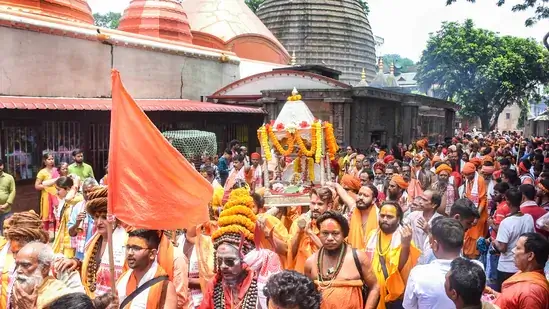
- Durga puja – Durga Puja is celebrated with great grandeur and devotion at Kamakhya Temple. It marks the victory of the goddess over the buffalo demon Mahishasura. Elaborate rituals, cultural programs, and colourful processions are an integral part of the celebration.
- When – October (specific dates vary each year)
- Manasha Puja – Manasha Puja is dedicated to the serpent goddess, Manasa Devi, and is celebrated with enthusiasm at the temple. Devotees offer prayers and seek blessings for the well-being and protection of their families.
- When- September (specific dates vary each year)
- Purnima Darshan – Full moon days are considered auspicious, and special darshans are organised at Kamakhya Temple. Devotees flock to the temple to seek blessings and witness the goddess in her full glory.
- When- On every full moon (Purnima) day
- Navaratri – Navaratri, the nine-night festival dedicated to the goddess Durga, is celebrated with devotion and cultural programs. The temple saw a surge of visitors during this period.
- When-September/October (specific dates vary each year)
- Kartik Purnima – On Kartik Purnima, devotees take a holy dip in the Brahmaputra River and visit the temple to seek blessings. This day is also associated with the worship of Lord Kartikeya.
- When- November (specific dates vary each year)
These festivals at Kamakhya Temple are not just spiritual occasions but also vibrant cultural celebrations that reflect the deep-rooted traditions of Assam. Each festival brings its unique flavour and fervour, offering visitors a chance to witness the rich tapestry of Indian culture and spirituality.
Savaari customers verified other attractions near Kamakhya Temple
While Kamakhya Temple holds its unique allure, the vicinity is rich with a myriad of attractions that beckon travellers seeking to delve deeper into Assam’s beauty and culture. Here’s a guide to some of the noteworthy places to visit near Kamakhya Temple.
- Umananda Island – Located within the Brahmaputra River, Umananda Island is a serene haven accessible by boat. Home to the Umananda Temple, this island offers breathtaking river views and is famous for its resident golden langurs. The temple is dedicated to Lord Shiva and is a tranquil place for spiritual reflection.
- Assam state zoo and botanical garden – a short drive from Kamakhya Temple, this zoo is a delight for nature enthusiasts and animal lovers. It boasts a variety of indigenous and exotic species, including the famed one-horned rhinoceros. The adjoining botanical garden is a scenic spot for strolls amidst lush greenery.
- Assam State Museum – For those interested in Assam’s rich history and culture, the Assam State Museum is a treasure trove. It houses an extensive collection of artefacts, sculptures, and art, providing insight into the region’s diverse heritage.
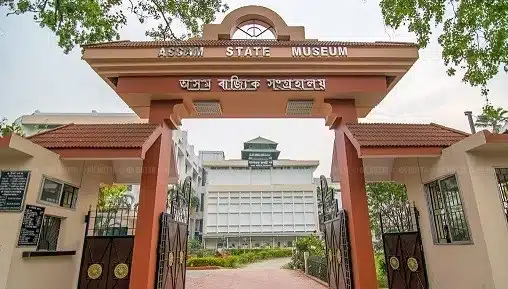
- Kamakhya Hill – The trek up Kamakhya Hill, besides offering a view of the temple, provides a panoramic view of Guwahati and the Brahmaputra River. It’s a perfect spot to enjoy the sunset and soak in the natural beauty of the region.
- Peacock Island – Also known as Umananda Island, Peacock Island is a delight for birdwatchers. You can spot various avian species here, making it a perfect destination for nature enthusiasts.
- Basistha ashram – This ancient ashram, located on the outskirts of Guwahati, is a serene retreat. The ashram is associated with the sage Vashishtha and is known for its tranquil environment, gushing streams, and lush greenery.
- Saraighat Bridge – For those with an interest in architecture, the Saraighat Bridge is an engineering marvel. It’s one of the longest road-cum-rail bridges in India and crosses the mighty Brahmaputra River.
These attractions near Kamakhya Temple offer a well-rounded experience, blending spirituality, culture, and the natural beauty of Assam. Exploring these destinations enhances your visit, providing a deeper understanding of the region’s heritage and a broader perspective on its captivating landscapes.
Places to visit near Kamakhya Temple by booking a Savaari cab
Exploring the attractions near Kamakhya Temple becomes even more convenient and comfortable when you opt for a chauffeur cab with a local driver. With professional drivers and the freedom to customise your itinerary, you can delve into the wonders of Assam at your own pace. Here are some additional destinations to explore near Kamakhya Temple.
- Srimanta Sankardev Kalakshetra – Located around 15 km from Kamakhya Temple, this cultural complex is dedicated to the medieval saint and scholar Srimanta Sankardev. It showcases Assamese culture, art, and traditions.
- Entry Fee – INR 50 per person.
- Working Hours– 10:00 AM – 4:30 PM.
- Guwahati Planetarium – The Guwahati Planetarium offers an educational and awe-inspiring experience for all ages. With its interactive shows and displays, it’s a great place to learn about the cosmos and the mysteries of the universe.
- Entry Fee – INR 30 per person.
- Working Hours – 10:00 AM – 4:30 PM (Closed on the last working day of the month).
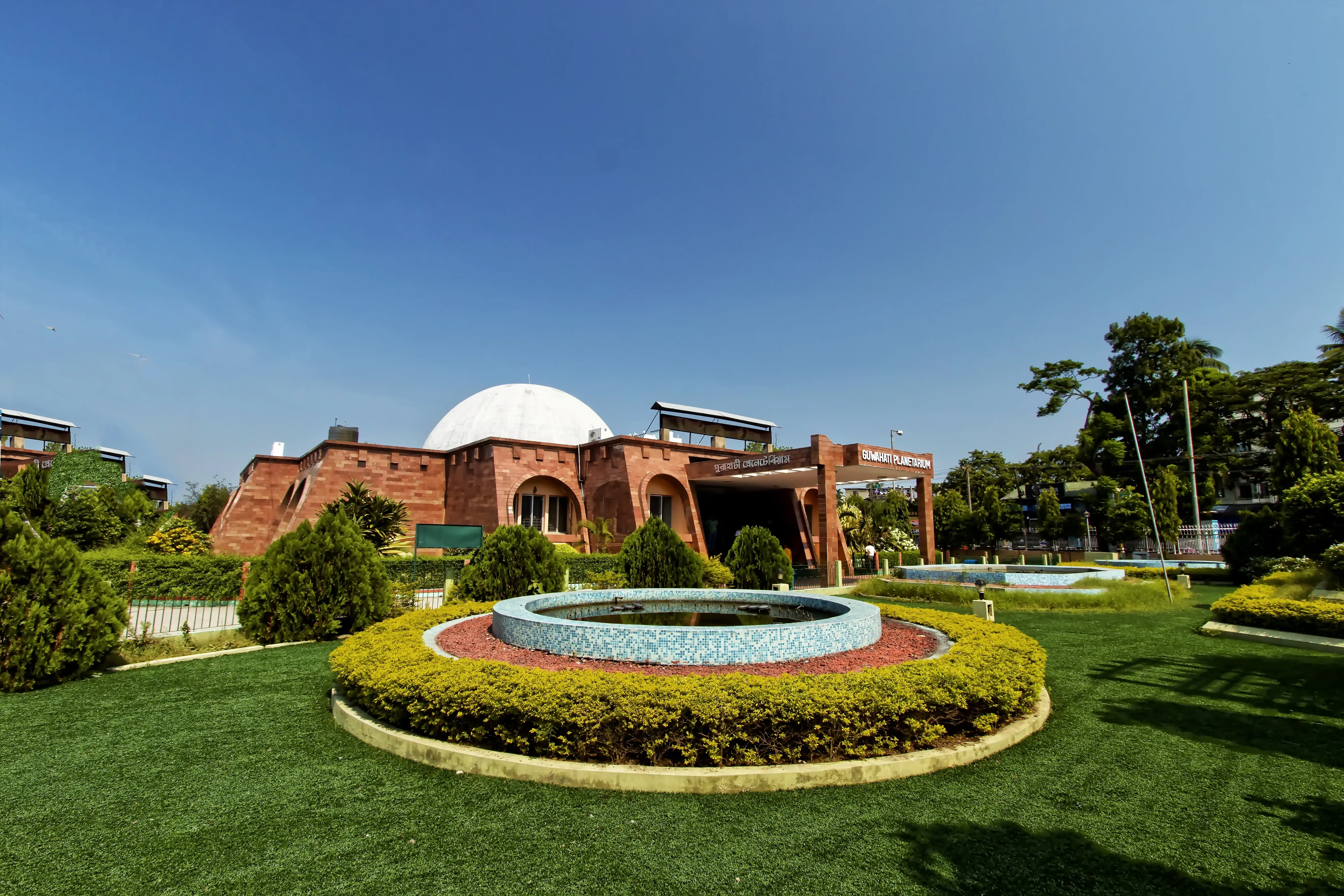
- Basistha ashram – This ancient ashram, located on the outskirts of Guwahati, is a serene retreat. The ashram, known for its tranquil environment, gushing streams, and lush greenery, is associated with the sage Vashishtha.
- Entry Fees – Nil
- Working Hours – 8:00 AM – 6:00 PM.
Travelling to these attractions with a car rental can also allow you to enjoy a hassle-free and personalised experience. Cultural heritage, natural beauty, and architectural marvels near Kamakhya Temple offer discoveries for every kind of traveler. Want to make sure you don’t miss out on any of the attractions near Kamakhya Temple? Book a Savaari car rental from Guwahati now and plan your trip with ease.
Savaari customers verified: Best places to eat near Kamakhya Temple
One of the joys of visiting Kamakhya Temple is the opportunity to savour the authentic flavours of Assam. Assamese cuisine is a delightful blend of diverse influences, and the state’s culinary treasures are a treat for the taste buds. When you’re near Kamakhya Temple, be sure to explore these dining options, offering a taste of the genuine Assamese experience.
- Paradise Restaurant, Silphukhri, Guwahati – Paradise Restaurant is a local favourite known for serving delectable Assamese cuisine. From traditional thalis (platters) to regional specialities like Assam tea, rice cakes, and fish curry, this place offers a true taste of the state’s culinary heritage.
- Heritage Khorikaa, Chandmari, Guwahati – Heritage Khorikaa is a charming eatery that specialises in Assamese barbecue. The smoky flavours and unique marinades create a memorable dining experience. Don’t miss their smoked pork and local delicacies like bamboo shoot curry.
- Khorika Restaurant, Ulubari, Guwahati – Khorika Restaurant is another gem for those who relish barbecue. Local spices and ingredients go into preparing their dishes, yielding aromatic, smoky flavors that are simply irresistible. “This place makes the most amazing food and I have never tasted such delicacies before,” says Devika Asthana.
- Ginger Restaurant, Guwahati – Ginger Restaurant is known for its Assamese thalis and a variety of regional dishes. It’s a great place to try different Assamese flavours, including rice-based items, fish preparations, and leafy greens. Rudra Bashtar says, “We saw the reviews that this place has and we were not surprised. We have fallen in love with Assamese flavours.”
- Naga Kitchen, Six Mile, Guwahati – While Naga Kitchen specializes in Naga cuisine, it’s an excellent place to explore flavours from the Northeast. “ If you are visiting this restaurant, try their Naga-style smoked pork and various indigenous dishes. Don’t miss when in Guwahati,” says Dipti Palav.
- Delicacy Dhaba, Ahom Gaon, Guwahati, – If you’re looking for budget-friendly options, Balaji Dhaba is a popular choice. They offer quick bites and local Assamese dishes, making it a good stop for a simple meal.
Assam’s cuisine is as diverse as its culture, with a blend of indigenous flavours and regional influences. Dining at these restaurants and cafes near Kamakhya Temple allows you to savour the rich culinary heritage of Assam while satisfying your appetite for authentic, local dishes.
Planning a trip to Kamakhya Temple
Embarking on a trip to Kamakhya Temple requires a clear understanding of its spiritual significance and cultural richness. Begin by selecting the best time to visit, usually during the post-monsoon season for pleasant weather. Research the temple’s darshan timings and any specific rituals you wish to participate in. Make sure you comply with the temple’s dress code and gather information on entry fees and pooja charges. Nearby attractions await your visit, many within easy reach through Savaari cab services, offering a chance to savor the diverse flavors of Assam’s cuisine. To make the most of your visit, learn about the temple’s history, legends, and the vibrant festivals it hosts. With careful planning, you can embark on a meaningful and enriching journey to Kamakhya Temple, embracing its spiritual and cultural treasures. For better planning and ease of travelling, remember to download the Savaari app.
How to reach Kamakhya Temple
Kamakhya Temple’s strategic location in Guwahati, Assam, makes it easily accessible by various modes of transportation. Whether you’re travelling from near or far, there are several options to choose from.
- Reaching Kamakhya Temple by road – Guwahati is well-connected by a network of national highways. You can either hire a cab or opt to rent a car to reach Kamakhya Temple from Guwahati. Apart from that, you can also choose to rent a car from different parts of Assam and neighbouring states.
- Reaching Kamakhya Temple by air – The nearest major airport is Lokpriya Gopinath Bordoloi International Airport in Guwahati, which connects to major cities in India. From the Guwahati airport, you can hire an airport taxi to reach the temple, which is approximately 20 kilometres away.
- Reaching Kamakhya Temple by train – Guwahati Junction is a major railway station and is well-connected to major cities in India. The Kamakhya Temple is just a few kilometres from the railway station, and you can easily hire a cab or hire a self-driving car to reach the temple.
- Reaching Kamakhya Temple by river – An interesting trip during the Kamakhya Temple visit could be to the Umananda Temple. The Brahmaputra River flows through Guwahati, and there are boat services available to reach Peacock Island, which is home to the Umananda Temple. The island offers a unique perspective of the temple and is a delightful way to reach it.
With such convenient connectivity and multiple options, reaching Kamakhya Temple is hassle-free, allowing you to focus on the spiritual and cultural experiences that await you at this ancient and revered site.
Hotels and resorts to stay near Kamakhya Temple
The Kamakhya Temple is a renowned pilgrimage site that attracts visitors from all walks of life, and to accommodate diverse preferences and budgets, the city offers a wide range of accommodations. Whether you’re seeking luxurious comfort, cosy budget stays, or something in between, you’ll find an option that suits your needs. Here’s a list of places to consider staying near
| Accommodation name | Approximate distance from city centre | Contact number |
| Hotel Vishwaratna | Approximate 2.5 kilometres distance from city centre | +91 99541 90004 |
| Hotel Prag Continental | Approximate 2.0 kilometres distance from city centre | +91 088765 07135 |
| Hotel Rajmahal | Approximate 3.0 kilometres distance from city centre | +91 084860 20037 |
| Brahmaputra Jungle Resort | Approximate 9.0 kilometres distance from city centre | +91 097060 99482 |
| Hotel Nandan | Approximate 3.2 kilometres distance from city centre | +91 097060 98845 |
| Kiranshree Portico | Approximate 2.5 kilometres distance from city centre | +91 097060 98014 |
Savaari customer verified: Highest road trips taken from Kamakhya Temple
The Kamakhya Temple not only offers a spiritual sanctuary but also serves as a gateway to some remarkable high-altitude road trips. Stunning vistas, lush hills, and winding roads bless the surrounding region, beckoning travelers to embark on an adventurous journey. From the lush landscapes of Meghalaya to the tranquil beauty of Arunachal Pradesh, these destinations are perfect for adventure seekers and nature enthusiasts looking to elevate their travel experiences. A list below details high-altitude destinations accessible by road from Kamakhya Temple, complete with their approximate distances.
| Location | Approximate distance from Kamakhya Temple |
| Kamakhya Temple to Shillong, Meghalaya | 100 kilometres |
| Kamakhya Temple to Cherrapunji, Meghalaya | 132 kilometres |
| Kamakhya Temple to Tawang, Arunachal Pradesh | 345 kilometres |
| Kamakhya Temple to Ziro, Arunachal Pradesh | 434 kilometres |
| Kamakhya Temple to Bomdila, Arunachal Pradesh | 319 kilometres |
| Kamakhya Temple to Tezpur, Assam | 181 kilometres |
| Kamakhya Temple to Kohima, Nagaland | 308 kilometres |
As we come to the end of our journey of exploration and discovery, it becomes clear that Kamakhya Temple is more than just a place of worship. It offers a profound spiritual experience that transcends time and space. With its ancient history, legends, and awe-inspiring rituals, Thi Temple is a testament to the deep-seated faith and cultural richness of Assam. The temple’s location atop the Nilachal Hill, the vibrant festivals it hosts, and the range of attractions nearby make it a destination that tantalises all the senses. Whether you seek spiritual solace, cultural immersion, or a dash of adventure, Kamakhya Temple has it all. It’s a place where the earthly and the divine meet, offering every traveller an unforgettable journey of the soul and the senses. So, pack your bags, embrace the traditions, and embark on a pilgrimage that’s sure to leave an indelible mark on your heart and mind.
Useful links
Last Updated on May 2, 2024 by Shabari Shankar
